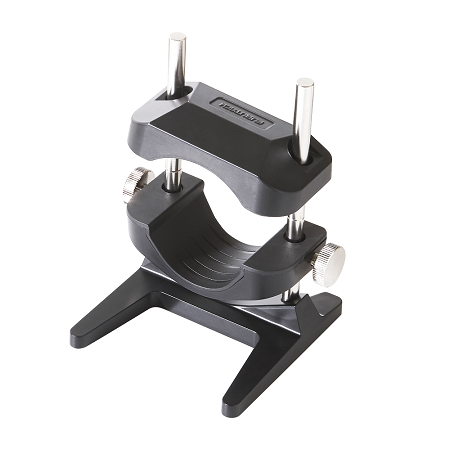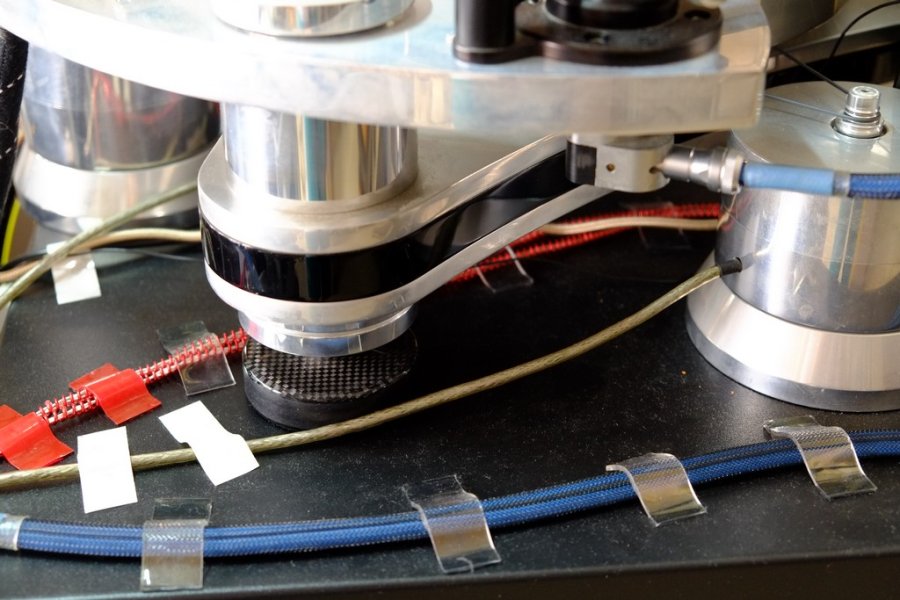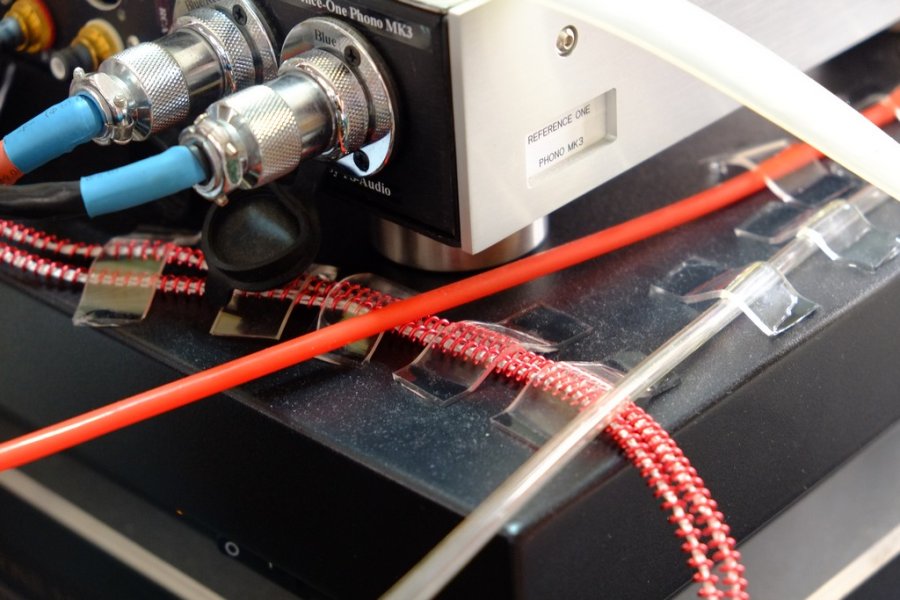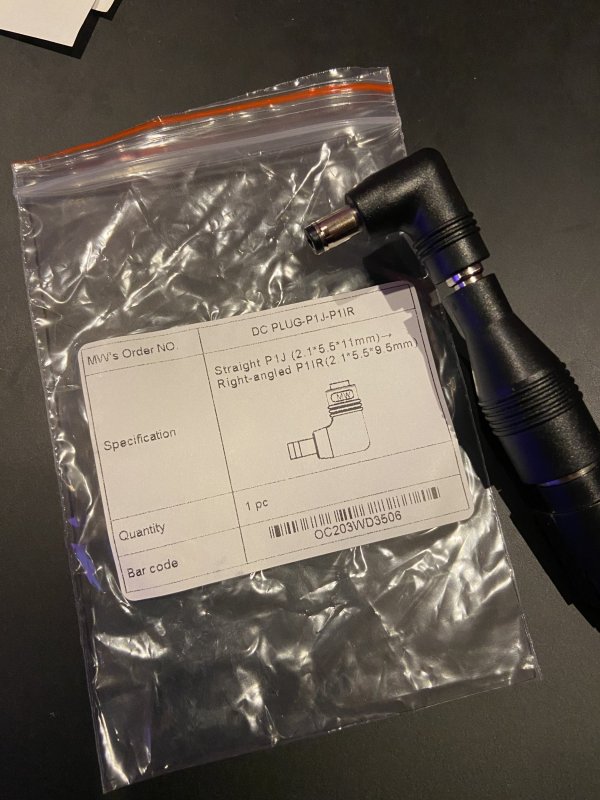You're going to be good. I measured the terminations on both my Reactio and Reactio Plus models using gauge pins, and they are both 2.1mm ID's.Agh! - Just seen the latest post by JEB42, while I was typing!
I think I'll just wait until Thursday, when the JS-2 and cable is due to arrive. The Uptone Sapphire cable is terminated 2.5mm at the LPSU end and I have requested 2.1mm at the Seismion end (as a result of information posted above).
I'll try it plugged in both ways and that should settle things! I can always return it and order the 2.5mm termination at the Seismion end of the cable!
I'll keep everyone updated!
Seismion - new active isolation platform from Germany
- Thread starter TLi
- Start date
You are using an out of date browser. It may not display this or other websites correctly.
You should upgrade or use an alternative browser.
You should upgrade or use an alternative browser.
This is an older email from Sebastian regarding the size of the connector. It is 2.1mmAgh! - Just seen the latest post by JEB42, while I was typing!
I think I'll just wait until Thursday, when the JS-2 and cable is due to arrive. The Uptone Sapphire cable is terminated 2.5mm at the LPSU end and I have requested 2.1mm at the Seismion end (as a result of information posted above).
I'll try it plugged in both ways and that should settle things! I can always return it and order the 2.5mm termination at the Seismion end of the cable!
I'll keep everyone updated!
"seems like the power supply's data sheet uses different DC plugs, all our isolators have a 2.1mm inner diameter pin." Best Regards Sebastian Mojrzisch Managing director"
Picture attached of the Mouser 90 degree connector that can be attached to the Seismion supplied straight connector. It is indeed 2.1mm.
I have just tried a 2.5mm connection into the Reaction 651 and 653's. It does work but it is loose. 2.1 works better.
Attachments
Since we are not able to measure it, we can not give any information about the improvement.It would be handy if the manufacture has data on how the power supply affects the performance.
The problem is as follows:
1. How do we perform a measurement - we acquire several time sequences of 8s of the ground vibration and the top-plate vibration (we need 8s in order to get 1/8 Hz resolution in the FFT), then we take a FFT of each sequence and do some kind of weighting of all sequences.
2. How does the human ear measure - it actually senses all the frequencies at ones and instantaneously. And it is trained over millions of years to detect the smallest irregularity in background noise.
Whereas the FFT Algorithm needs a time sequence, which has to be quite long if one wants to be able to resolve low frequencies. Than the FFT Algorithm does some kind of averaging (actually the averaging is even different for each frequency). A solution to this is a short time FFT or wavelet transformation, however these are still far behind the human ear.
So the short answer is, we get the same measurement results with the switching and the linear power supplies.
Sebastian
Last edited:
I take this as the answer.
To think that the power supply would make a difference, would only happen if the equipment was not well designed.
But it sounds like it is well designed, and is immune to the flavour of the power supply…
…
So the short answer is, we get the same measurement results with the switching and the linear power supplies.
Sebastian
To think that the power supply would make a difference, would only happen if the equipment was not well designed.
But it sounds like it is well designed, and is immune to the flavour of the power supply…
Yes, seems like the tables don't isolate from vibrations any better with LPSU. However, SMPS probably pollutes the power grid and environment in the user's home, and the SQ uplift reported by the change from the supplied SMPS to LPSU is very real. Just not due to any enhancing of the Seismion's function itself.I take this as the answer.
To think that the power supply would make a difference, would only happen if the equipment was not well designed.
But it sounds like it is well designed, and is immune to the flavour of the power supply…
Thanks for posting this. Indeed, we started producing the new Reactio 2 models. We will update our website within the next week, and give all relevant information that have been asked recently.The newly launched top mode : Reactio 2
Besides, Hiendy from Hong Kong will present and discuss the Reactio 2 during his live stream on YouTube tomorrow, thursday 9pm HK time. We will try to be available during the live chat and answer all your questions. Looking forward to meet you guys there!
Marcus
Yes, seems like the tables don't isolate from vibrations any better with LPSU. However, SMPS probably pollutes the power grid and environment in the user's home, and the SQ uplift reported by the change from the supplied SMPS to LPSU is very real. Just not due to any enhancing of the Seismion's function itself.
^That^ is a great point, but it was not how I read it earlier.
Which is totally defendable in my option… well done.
MSRP of the Reactio 2 is 10.000 Euro net. It weights about 14.5 kg.I wait for 2 things about Reactio 2 : weight, and price in Europe
Thank you! Maybe you will update your website next week, but what will Reactio 2 improve ,compared to Reactio Plus, which is less expensive?
The Reactio Plus is discontinued, there will be only the Reactio 2 available.Thank you! Maybe you will update your website next week, but what will Reactio 2 improve ,compared to Reactio Plus, which is less expensive?
The main features of Reactio 2 are:
- automatic levelling, 4 additional DC-motors lift each corner and measure the hight within 20µm --> this will always ensure optimal performance (the manual levelling setting on Reactio Plus was quite challenging and the user was not able to see if optimal position was set)
- 2x better noise performance than Reactio Plus
- higher passive resonance damping of top-plate and bottom-plate
- much higher quality push-button, DC-connector, housing etc.
- design optimised for high-end audio usage
Sebastian
Yes, same as before but 10mm higher:Thank you Sebastian; will you propose two different sizes as before, and what will they be?
500x400 - width 500 mm, depth 400 mm and hight 90mm
600x500 - width 600 mm, depth 500 mm and hight 90mm
Sebastian
Soliciting Seismion owner's experiences in minimizing the undesirable effects of stiff cables which have the potential to introduce external vibrations as well as "snag" the free movement of the components which sit on the Seismion platforms.
How does one best deal with extremely stiff signal cables like the Iconoclast XLRs which resemble iron rods? I suppose the same challenge will extend to AC cables, as they typically hang off the back of components in an arc, gravity pulling its mass downwards; the heavier the gauge of the power cable, the more it will directly couple to the component to directly transmit external vibrations.
How can a cable supporting device like a Furutech NCF Booster be best used with a Seismion platform, as it will block/impede vibration-cancelling movements of the Seismion?

How does one best deal with extremely stiff signal cables like the Iconoclast XLRs which resemble iron rods? I suppose the same challenge will extend to AC cables, as they typically hang off the back of components in an arc, gravity pulling its mass downwards; the heavier the gauge of the power cable, the more it will directly couple to the component to directly transmit external vibrations.
How can a cable supporting device like a Furutech NCF Booster be best used with a Seismion platform, as it will block/impede vibration-cancelling movements of the Seismion?

NCF Booster | FURUTECH
Multi-material hybrid construction: an original Furutech design<br /> For superior connector and cable damping<br />
www.furutech.com
Last edited:
This is in fact a very relevant and often overlooked question! The same problems occur when dealing with highly precise vibration measurements. We use external sensors when measuring the transmissibility, and they also have cables.Soliciting Seismion owner's experiences in minimizing the undesirable effects of stiff cables which have the potential to introduce external vibrations as well as "snag" the free movement of the components which sit on the Seismion platforms. How does one best deal with extremely stiff signal cables like the Iconoclast XLR which are essentially like iron rods? I suppose the same challenge will extend to AC cables, as they typically hang off the back of components in an arc, "pulling" through gravity; the heavier the gauge of the power cable, the more it will directly couple to the component. How would a cable supporting device like a Furutech NCF Booster be best used with a Seismion platform, as it will block/impede vibration-cancelling movements of the Seismion?

NCF Booster | FURUTECH
Multi-material hybrid construction: an original Furutech design<br /> For superior connector and cable damping<br />www.furutech.com
You are totally right, the stiff cables are just another path for disturbances reaching from the ground up to the isolated top-plate. The other path is through the internal springs of the isolator, which cannot be avoided of course.
There might not be the one and only solution, but generally one should try to have no mechanical prestress on the cable to begin with. Then it is beneficial to have a large distance between the points where the cable connects with the ground, to make it more elastic inbetween. I think there are even some simple, passive vibration isolators that can be used to contact the cable, before placing them directly on the ground. In laboratory, the cables are sometimes suspended via elastic bands against the ceiling.
One final remark: these problems have the highest impact when the isolator itself is very soft, because the relativ stiffness of the cable is then even more dominating. That means especially passive vibration isolators (which rely on a very soft suspension), for example air springs or even more MinusK isolators will have the highest degradation of isolation. Active isolators tend to be more stiff by themselves, and they can produce active counter-forces for stabilization / isolation.
Marcus
Active isolators can significantly reduce vibration to enhance the performance of all audio components. In my system, not only audio devices, such as turntables and amps, but also interconnecting cables between those audio devices benefit greatly from the vibration-less environment provided by active isolators.
I have secured a variety of interconnecting cables on the top-plate of Reactio by tape and found the sonic performance is improved. The cables I have tried include signal interconnects, power cables and even airflow tubes for air-bearing tonearm and all of them benefit by Reactio.

I have secured a variety of interconnecting cables on the top-plate of Reactio by tape and found the sonic performance is improved. The cables I have tried include signal interconnects, power cables and even airflow tubes for air-bearing tonearm and all of them benefit by Reactio.


I have tried to put the air pumps of the air-bearing tonearms on Reactio, but, unfortunately, the active isolator didn’t work properly and generate abnormal continuous noise. I guess the vibration amplitude of the pump may be greater than the maximal control force of the isolator and the unsuccessful compensating attempt of the isolator cause the abnormal feedback loop.

Although the pump is not suitable for Reactio, the vibration generated by the pump must be carefully addressed because the pump is one of the noisiest components in the audio room. Currently I use the passive isolator composed of multi-layered audiophile platforms and footers beneath the pump to reduce the vibration.

Although the pump is not suitable for Reactio, the vibration generated by the pump must be carefully addressed because the pump is one of the noisiest components in the audio room. Currently I use the passive isolator composed of multi-layered audiophile platforms and footers beneath the pump to reduce the vibration.
Similar threads
- Replies
- 19
- Views
- 1K
- Replies
- 31
- Views
- 5K
- Replies
- 1
- Views
- 2K
| Steve Williams Site Founder | Site Owner | Administrator | Ron Resnick Site Owner | Administrator | Julian (The Fixer) Website Build | Marketing Managersing |



